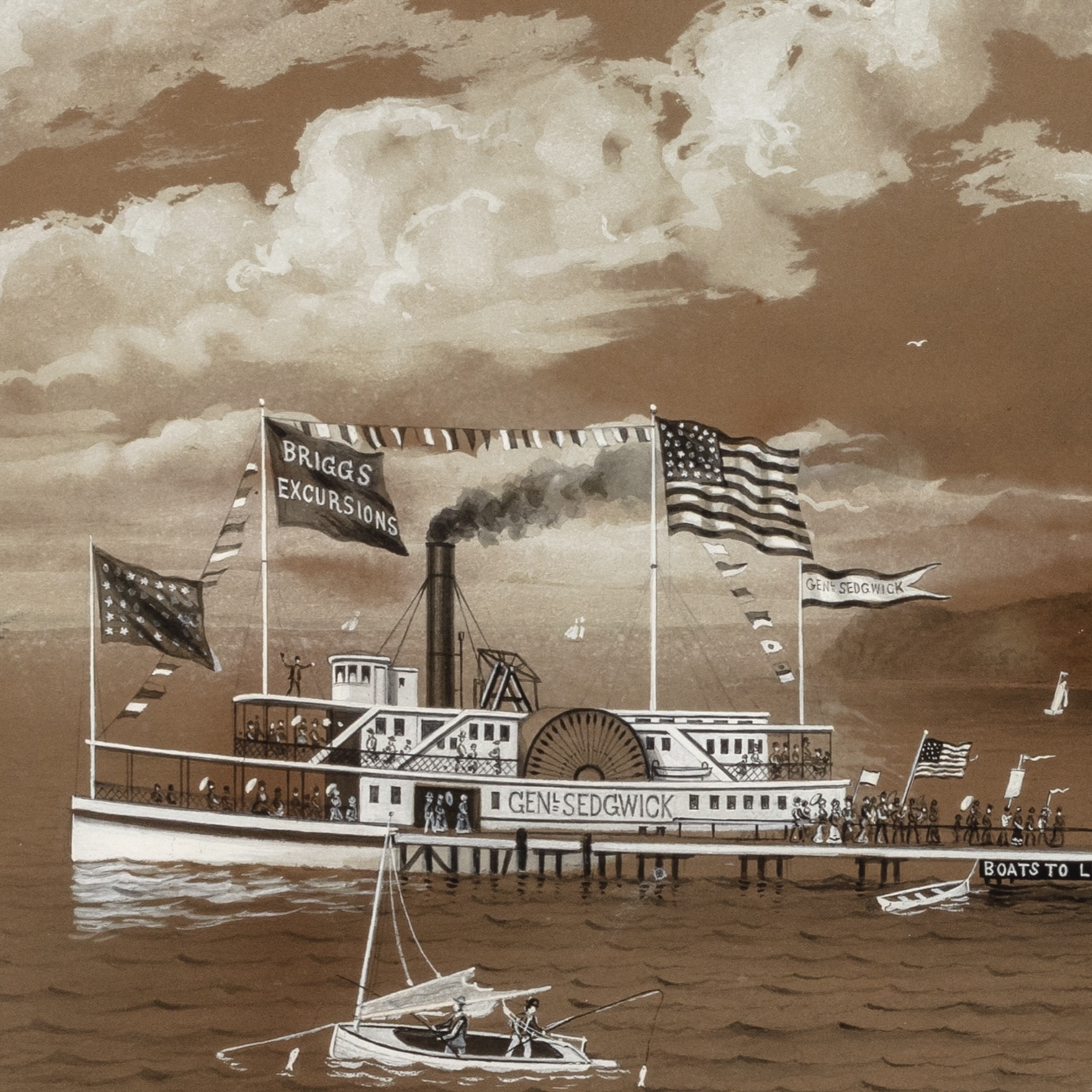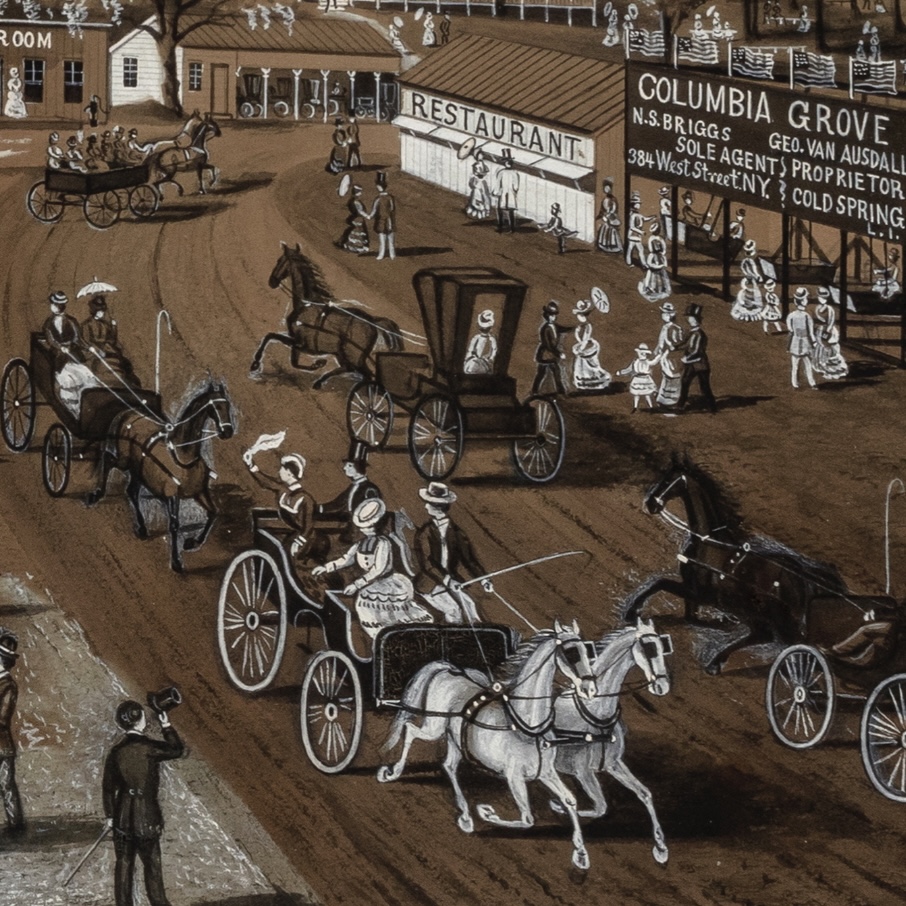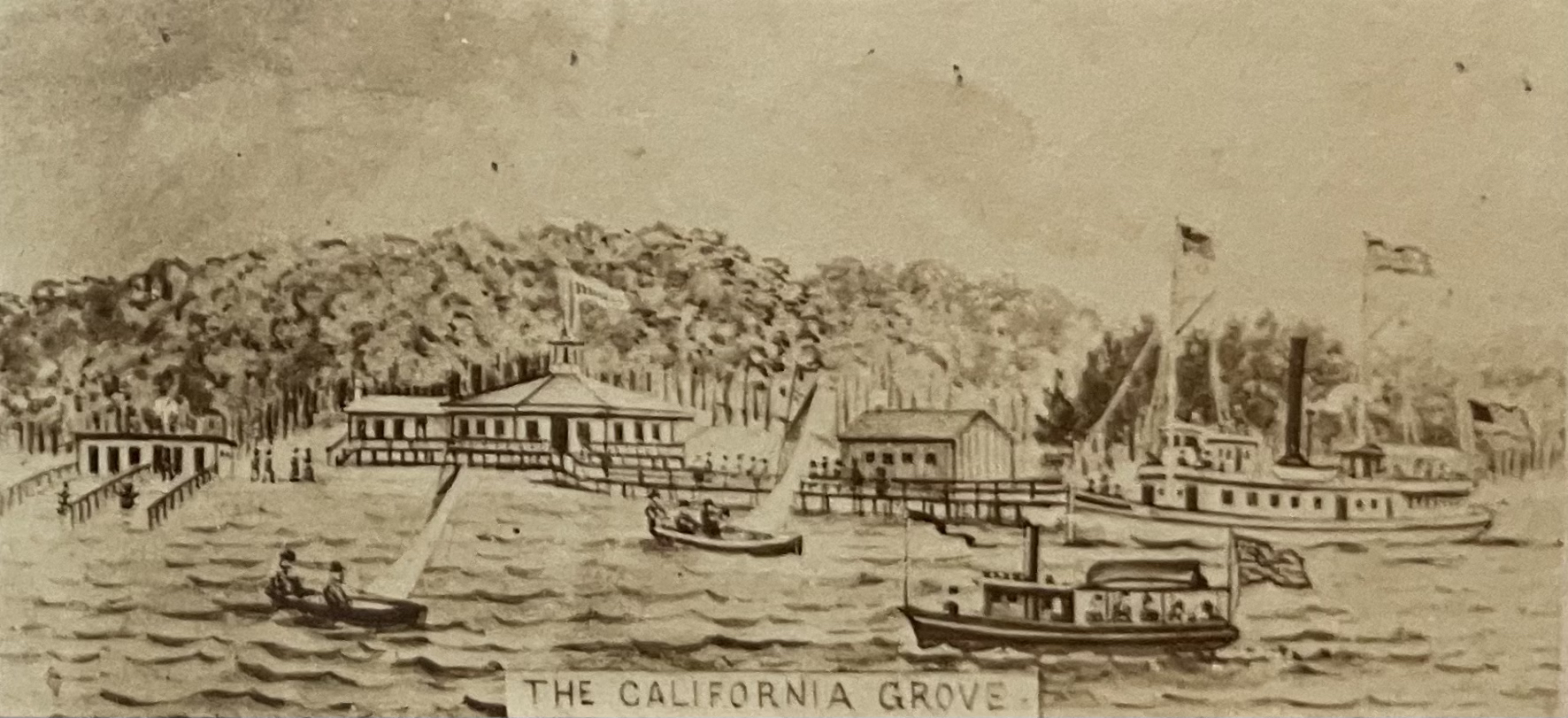Local Travel
New York City's and Long Island’s flourishing population in the mid- to late nineteenth century increasingly sought leisure activities, encouraging the growth of the region's recreation industry. Hotels and resorts popped up along the North and South Shore, growing in popularity as steamships ferried new tourists and repeat visitors to their wharves. Columbia Grove, located on Lloyd Neck, offered guests an opportunity to relax on the beach, swim, or rent small watercraft to take out along the coastline.
Edward Lange (1946-1912), Columbia Grove, 1881, Watercolor and gouache on paper, 21.25 x 29 in. (framed), Cold Spring Harbor Whaling Museum, Gift of Harriet Valentine, 90.01
Columbia Grove was owned and operated by George Van Ausdall. The details in Lange’s painting captured the energy and vibrancy of the seaside resort. The two hundred sixty-seven figures populating the painting's waters, roads, and forest gesture at the high volume of foot traffic Columbia Grove received at its height of popularity. Gen’l Sedgwick, anchored at the end of the wharf to the left side, was one of a small fleet of barges and steamers owned by N.S. Briggs of Briggs Excursions. Together, they could ferry several thousand people to and from Columbia Grove each day.


Details, Edward Lange, Columbia Grove, 1880
 Other resorts along the North Shore, like California Grove in Port Jefferson, appear in details of Lange's composite pictures. In this context, Lange chose to create artwork to be consumed by tourists arriving and departing by steamboat. Each separate detail in this picture focuses on a notable location, building, or industry in Port Jefferson. As a whole, Lange's composite image—collaged out of these small scenes—was the perfect keepsake for a visitor to town.
Other resorts along the North Shore, like California Grove in Port Jefferson, appear in details of Lange's composite pictures. In this context, Lange chose to create artwork to be consumed by tourists arriving and departing by steamboat. Each separate detail in this picture focuses on a notable location, building, or industry in Port Jefferson. As a whole, Lange's composite image—collaged out of these small scenes—was the perfect keepsake for a visitor to town.

Starting in the 1880s, Lange focused in earnest on producing a number of composite scenes of various towns. This photograph of a collaged artwork focuses on the village of Greenport, in which Lange placed particular emphasis on the fleets of steam and sail vessels routinely navigating its coastal waters. Interestingly enough, he approached their presence around the harbor as a landmark of the village—the same way he treated church buildings, town halls, and schools in the other details.
(above) Detail, Edward Lange, Greenport, L.I., n.d.; (below) Edward Lange (1846-1912), Greenport, L.I., n.d., Albumen print, 8.5 x 11 in., Queens Borough Public Library



